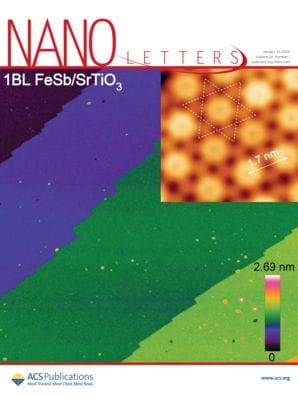Chemists describe a new approach to deep brain stimulation using magnetogenetics, which could one day be used to treat people with Parkinson’s disease and other neurological disorders.

Parkinson’s disease (PD) affects over 8.5 million people globally, and prevalence has doubled in the past 25 years.1 The disease causes a number of issues including problems with movement, sleep, and mental health. There is currently no cure, but therapies and medicines can reduce symptoms and help to manage pain. One such therapy is electrical deep brain stimulation, but implanting electrodes to stimulate the nerve cells is invasive and can be imprecise, running the risk of hardware failure and hemorrhage.
Many biological systems use mechanotransduction—the conversion of a mechanical stimulus into an electrochemical signal—to naturally regulate touch, pain, hearing, and kinesthesia.2 Mechanotransduction happens when stretch, pressure, or twist exerts a mechanical force on an ion channel, opening it and allowing an influx of ions. Now, researchers reporting in Nano Letters describe a new approach to deep brain stimulation that harnesses this lever.3
Magnetogenetics offer the potential to use magnetic nanostructures to wirelessly trigger specific, gene-edited nerve cells in the brain from outside the body. To test this, the researchers injected these nanoparticles into a specific area of the brain called the subthalamic nucleus (STN) in PD mice. They found that this technique significantly improved movement and balance in mice with PD compared to untreated mice without damaging surrounding brain tissue. Importantly, these effects lasted over time. The authors report that this method offers a promising, non-invasive way to deliver precise stimulation to the brain cells involved in PD symptoms, potentially providing a safer and more effective treatment approach.3

Nanoscale Magneto-mechanical-genetics of Deep Brain Neurons Reversing Motor Deficits in Parkinsonian Mice
DOI: 10.1021/acs.nanolett.3c03899
The group is also looking at other ways to stimulate specific receptors in living organisms using magnetic fields, including a new type of nanoparticle called a hydrogel magnetomechanical actuator (h-MMA).4 The h-MMA nanoparticle works by converting magnetic energy into mechanical force, which can then activate certain proteins in cells. In this study, the researchers demonstrate that h-MMAs can be used to modulate Notch signaling, a critical cellular pathway, both in cell cultures and in live mice. This highlights the potential of h-MMAs as a useful tool for studying and manipulating cell signaling in living organisms.
It will be exciting to see how this research develops, but these wireless approaches already have real therapeutic potential and could one day be used to treat motor dysfunction in people with early- or late-stage Parkinson’s disease—as well as other neurological disorders such as epilepsy and Alzheimer’s disease.
Discover More Magnetogenetics Research in ACS Journals
Magnetogenetics with Piezo1 Mechanosensitive Ion Channel for CRISPR Gene Editing
Wookjin Shin, Sumin Jeong, Jung-uk Lee, Soo Yeun Jeong, Jeonghong Shin, Hyongbum Henry Kim*, Jinwoo Cheon*, and Jae-Hyun Lee*
DOI: 10.1021/acs.nanolett.2c02314
Engineering a Genetically Encoded Magnetic Protein Crystal
Thomas L. Li, Zegao Wang, He You, Qunxiang Ong, Vamsi J. Varanasi, Mingdong Dong, Bai Lu, Sergiu P. Paşca, and Bianxiao Cui*
DOI: 10.1021/acs.nanolett.9b02266
Magnetic Control of Cells by Chemical Fabrication of Melanin
Kosuke Nishio, Kohei Toh, Amelie Perron, Masato Goto, Masahiro Abo, Yuichi Shimakawa*, and Motonari Uesugi*
DOI: 10.1021/jacs.2c06555
Magnetic-Manipulated NK Cell Proliferation and Activation Enhance Immunotherapy of Orthotopic Liver Cancer
Han Jiang, Hao Fu, Tao Min, Ping Hu*, and Jianlin Shi
DOI: 10.1021/jacs.3c02049
References
- Parkinson disease fact sheet. World Health Organization 2023.
- Lee, J.-H. et al. Magnetic Nanoparticles for Ultrafast Mechanical Control of Inner Ear Hair Cells. ACS Nano 2014, 8, 7, 6590–6598.
- Shin, W. et al. Nanoscale Magneto-mechanical-genetics of Deep Brain Neurons Reversing Motor Deficits in Parkinsonian Mice. Nano Lett. 2024, 24, 1, 270–278.
- Jeong, S. et al. Hydrogel Magnetomechanical Actuator Nanoparticles for Wireless Remote Control of Mechanosignaling In Vivo. Nano Lett. 2023, 23, 11, 5227–5235.
